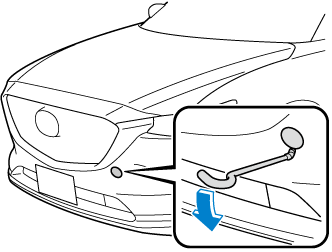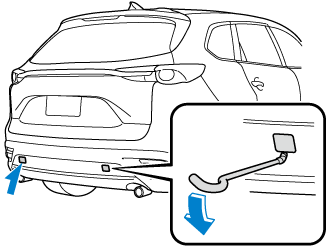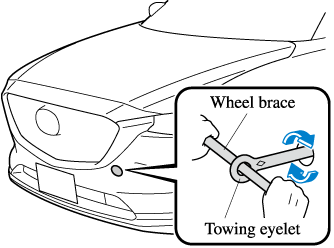

Towing Hook
-
Remove the towing eyelet and the wheel brace from the luggage compartment (Search).
-
Wrap a flathead screwdriver or similar tool with a soft cloth to prevent damage to a painted bumper, and open the cap located on the front or rear bumper.
Front

Rear

Do not use excessive force as it may damage the cap or scratch the painted bumper surface.
-
Securely install the towing eyelet using the wheel brace.
Front

Rear

-
Hook the towing rope to the towing eyelet.
-
If the towing eyelet is not securely tightened, it may loosen or disengage from the bumper when towing the vehicle. Make sure that the towing eyelet is securely tightened to the bumper.
-
Be careful not to damage the towing eyelet and towing hook, vehicle body, or transaxle system when towing under the following conditions:
-
Do not tow a vehicle heavier than yours.
-
Do not suddenly accelerate your vehicle as it will apply a severe shock to the towing eyelet and towing hook or rope.
-
Do not attach any rope other than to the towing eyelet and towing hook.
-
-




